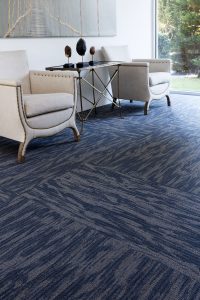Annual trend watch report identifies four major design influences for senior living residences and communities
J+J Flooring Group, a leading manufacturer of commercial specified flooring, has identified four major trends influencing the design of today’s senior living residences and communities. The four trends are: Defining Home, Connection to Community, Support for Staff and Details Matter.
These newly identified trends are included in J+J’s 2017 Senior Living Design Trend Report. The report is available for free download at http://www.jjflooringgroup.com/senior-living-design-symposium/
The report provides design professionals and senior living owners/operators with leading-edge information to assist them in making the most informed design and product decisions to achieve their goals and desired outcomes.

The 2017 trends, identified in partnership with healthcare thought expert Sara Marberry, incorporate extensive industry collaboration, discussion and research from the company’s third annual Senior Living Design Symposium. More than 33 design professionals and experts in senior living have participated in the annual symposium. Part of J+J’s role as a manufacturer is to help its customers navigate the dynamics of the senior living market, including understanding the subtle but important shifts in design and economic conditions.
“The senior living market is constantly evolving, which can provide both challenges and opportunities for designers and operators in this industry,” said Bob Bethel, group director of business development for J+J Flooring Group. “Our annual symposium is a fun and educational gathering of leading experts who are passionate about their calling. The unbiased and critical insight gained can benefit design professionals, staff and residents alike. Identifying and understanding these trends is also vital to J+J, as we seek to remain a leading source for expert knowledge and flooring products.”
This year’s four trends are identified as:
Defining Home – As senior living continues to evolve, there is an increasing emphasis on creating places that are less institutional and feel like home. This is not new, but efforts to define what home means to different senior populations and translate that to design are taking it to a new level. Each individual has a different meaning of home, and that meaning is driven by regional considerations, socio-economic status and personality. For most people, however, possessions make a space feel like home and create an emotional connection. How to integrate those possessions into a more compact senior living residence is always challenging. When it comes to defining home, senior living communities are going to have to continually adapt to a changing design aesthetic.
Connection to Community – One of the most common complaints of people in senior living communities is isolation – from each other, from their extended families and from the community at large. Breaking down the isolation barrier is perhaps one of the biggest challenges for senior living owners and operators. Emerging models include repurposing older properties that are more centrally located within communities, where senior living is just one component of the greater campus. Within the senior living communities themselves, design is being used in common spaces to encourage interaction, support family/friend relationships, promote involvement in daily activities and foster opportunities for multi-generational interaction. Programming is shifting from “what can we offer to seniors” to “what do seniors want to do?”
Support for Staff – Day in and day out, the staff is also part of a senior living community. They, too, need to feel supported and comfortable in their work environment and be able to relieve stress when needed. It makes sense that if owners/operators take good care of their employees, those employees will take good care of the residents. Progressive owners/operators are looking at the Google model of staff break rooms, providing lounge seating, ping pong tables, full kitchens with free food and sleep rooms. Some are even designating a “captain’s table” in the main kitchen, where the staff eats together prior to serving residents. Access to the outdoors and connection to nature is also important for staff – another way in which biophilic design can play an important role.
Details Matter – Variety and an innate desire to explore and discover new things are essential to the human experience in all stages of life. This is where the details matter in senior living design. No matter what the size, scope or budget of the project, paying attention to the design details is what will make it feel like home, foster community and support staff. Resident directed/person centered care, an ongoing interactive process between residents, caregivers and others, speaks to this as well. It honors residents’ dignity and choices, which can then be reinforced by design. Design details also matter to seniors and their adult children who are looking for a senior living residence or community – particularly at the mid- to high price range.
As flooring continues to be the canvas upon which a space is built, soft surface flooring such as carpet provides multiple advantages for senior living residents, guests and employees alike. From designs that can support interaction and mobility to better acoustics and enhanced safety, carpet can play a major role in helping meet the trends identified in this year’s report.
To learn more about flooring for senior living, go to www.jjflooringgroup.com or call 800.241.4586.